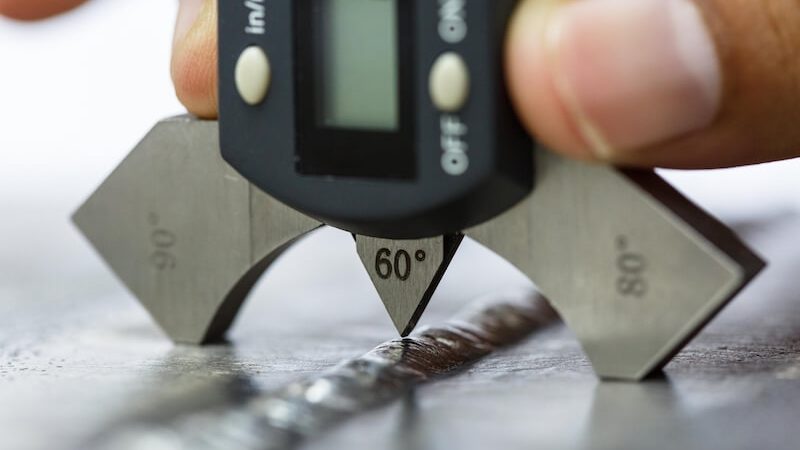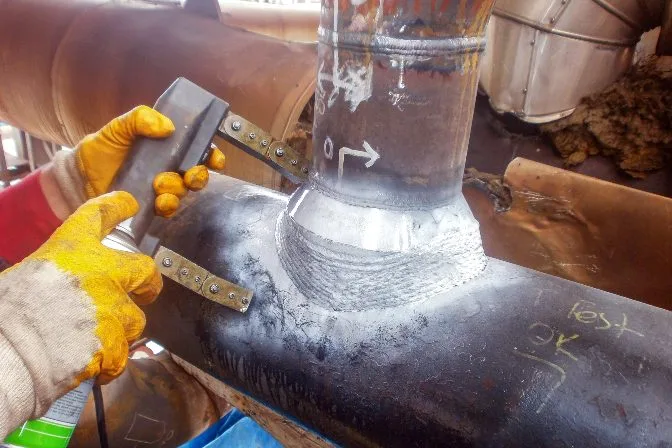Maximize Your Welding Quality with Expert Inspection Services in Gilbert Arizona
Maximize Your Welding Quality with Expert Inspection Services in Gilbert Arizona
Blog Article
Discovering the Significance of Welding Evaluation in Industrial Applications: Guarding Against Failings and Enhancing Longevity
Welding assessment offers as a critical line of protection in commercial applications, making sure the architectural honesty and integrity of bonded elements. By systematically determining problems such as porosity and insufficient combination, evaluations not only prevent failures yet additionally expand the life-span of crucial assets.
Role of Welding Examination
Welding assessment offers as a vital protect in industrial applications, making certain that welded structures satisfy defined standards of top quality and security. This process entails a methodical evaluation of welds to validate their stability, strength, and compliance with well established codes and requirements. The function of welding evaluation is complex, including both aesthetic assessments and non-destructive screening approaches, which may consist of ultrasonic, radiographic, or magnetic bit screening.

Additionally, welding assessment plays a vital duty in governing conformity. Inevitably, the function of welding assessment is indispensable in promoting safety, enhancing performance, and protecting investments in industrial facilities.
Typical Welding Problems

Among one of the most prevalent defects is porosity, characterized by small gas pockets entraped within the weld steel. This takes place as a result of contaminants or improper securing gas, endangering the weld's toughness. Another substantial issue is incomplete combination, where the weld metal falls short to bond effectively with the base product, potentially leading to structural weaknesses.
Splits can likewise develop throughout or after the welding procedure, typically associated to thermal tensions or improper cooling rates. Furthermore, damaging, where the base steel is deteriorated along the weld bead, can deteriorate the joint and is frequently brought on by excessive warmth input or inaccurate technique.
In addition, lack of infiltration happens when the weld steel does not reach the origin of the joint, causing inadequate stamina. Understanding these typical issues is vital for assessors and welders alike to guarantee that bonded frameworks satisfy safety and security and performance requirements, inevitably stopping possible failures in industrial applications.
Advantages of Regular Examinations
Regular assessments function as a critical protect in making certain the reliability and long life of bonded structures. These examinations recognize possible defects and weaknesses that might compromise the integrity of welds, enabling for timely remediation before problems rise. By implementing a structured evaluation regimen, companies can dramatically decrease the danger of disastrous failures that may result in expensive downtime, equipment replacement, or even mishaps.
In addition, normal examinations add to enhanced high quality control throughout the welding process. By adhering to a constant assessment routine, business can make sure that their welding techniques fulfill established top quality standards and ideal techniques. This not just promotes a society of responsibility however likewise encourages continuous renovation amongst welding employees.
Additionally, routine inspections facilitate far better upkeep planning. By identifying wear and tear early, companies can strategically set up replacements and repair services, reducing disruption to procedures. This proactive strategy eventually leads to prolonged asset life-span and enhanced total efficiency.
Lastly, a commitment to normal assessments can enhance a firm's credibility in the sector. Stakeholders and customers progressively worth organizations that focus on safety and security and top quality, thus boosting trust fund and possibly causing raised organization opportunities.
Market Standards and Laws
Sticking to industry criteria and policies is a basic aspect of welding evaluation that enhances the advantages of routine assessments. These standards, developed by companies such as the American Welding Society (AWS) and the American Society of Mechanical Engineers (ASME), give a framework for finest practices in welding processes, materials, and assessment strategies. Conformity with these regulations makes sure that welds fulfill the needed high quality and safety and security criteria, considerably lowering the risk of architectural failures.
Regulatory bodies like the Occupational Security and Health And Wellness Management (OSHA) additionally apply standards that protect workers and the environment during welding operations. By following these established standards, industries visite site can enhance the reliability of their structures and components, guaranteeing they execute as planned under numerous functional conditions.
In addition, adherence to sector criteria promotes consistency in quality assurance, helping with smoother communication among stakeholders and regulatory agencies. This placement not just lessens obligation risks but likewise boosts the reliability of organizations in affordable markets. Eventually, compliance with welding criteria and laws is not merely a legal commitment; it is an important financial investment in safety, efficiency, and lasting functional success.
Future Trends in Welding Assessment
As markets remain to advance, the future of read review welding evaluation is poised to incorporate advanced modern technologies that boost precision and efficiency. Among the most substantial patterns is the adoption of automation and robotics in examination procedures. Automated systems can conduct examinations quickly, decreasing human mistake and increasing throughput in manufacturing settings.
Moreover, the combination of fabricated knowledge (AI) and artificial intelligence algorithms will enable anticipating analytics, enabling for real-time assessments and positive upkeep (Welding Inspection Gilbert Arizona). By assessing information from previous evaluations, these modern technologies can identify patterns that could show potential failures, consequently extending the life expectancy of bonded parts

Moreover, the fad towards digitalization will result in enhanced information management systems that facilitate better tracking, reporting, and compliance with market criteria. In recap, the future of welding assessment is defined by technical developments that guarantee to significantly boost integrity, safety, and operational effectiveness in various industrial applications.
Conclusion
In verdict, welding assessment serves an essential feature in making sure the honesty and resilience of bonded structures throughout different industrial applications. As innovations in innovation proceed to progress, the future of welding assessment promises boosted accuracy and effectiveness, ultimately adding to the longevity of important facilities.
Welding inspection offers as an important line of defense in industrial applications, ensuring the architectural integrity and dependability of welded parts.Welding assessment serves as an important protect in commercial applications, making sure that welded structures fulfill defined requirements of high quality and safety and security - Welding view it Inspection Gilbert Arizona. Inevitably, the function of welding inspection is indispensable in advertising safety, boosting efficiency, and protecting investments in commercial infrastructure
These requirements, developed by organizations such as the American Welding Culture (AWS) and the American Culture of Mechanical Designers (ASME), offer a structure for ideal practices in welding processes, products, and evaluation methods.In verdict, welding assessment offers a vital function in making certain the integrity and longevity of welded structures across different commercial applications.
Report this page